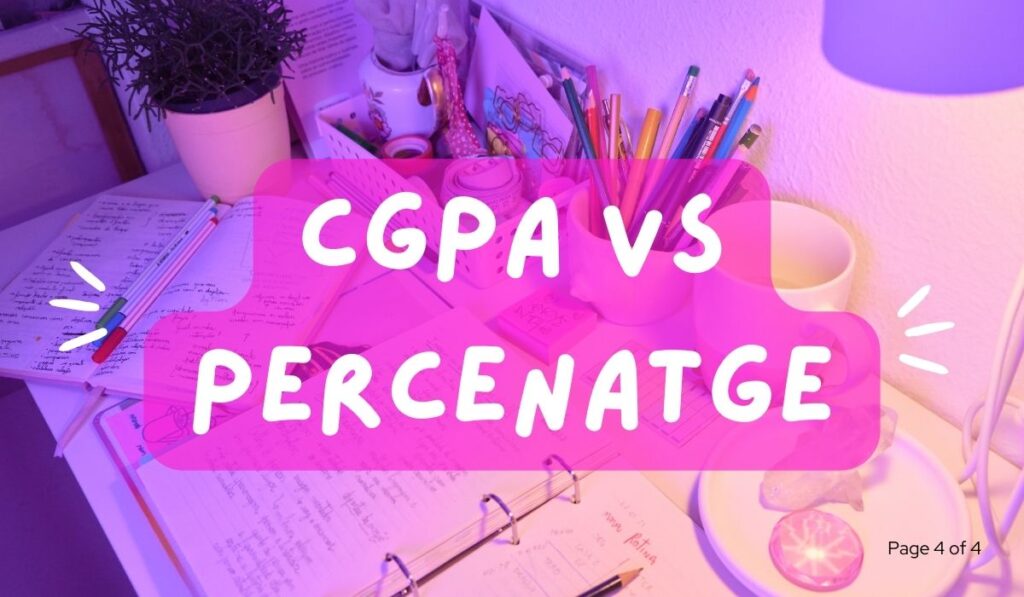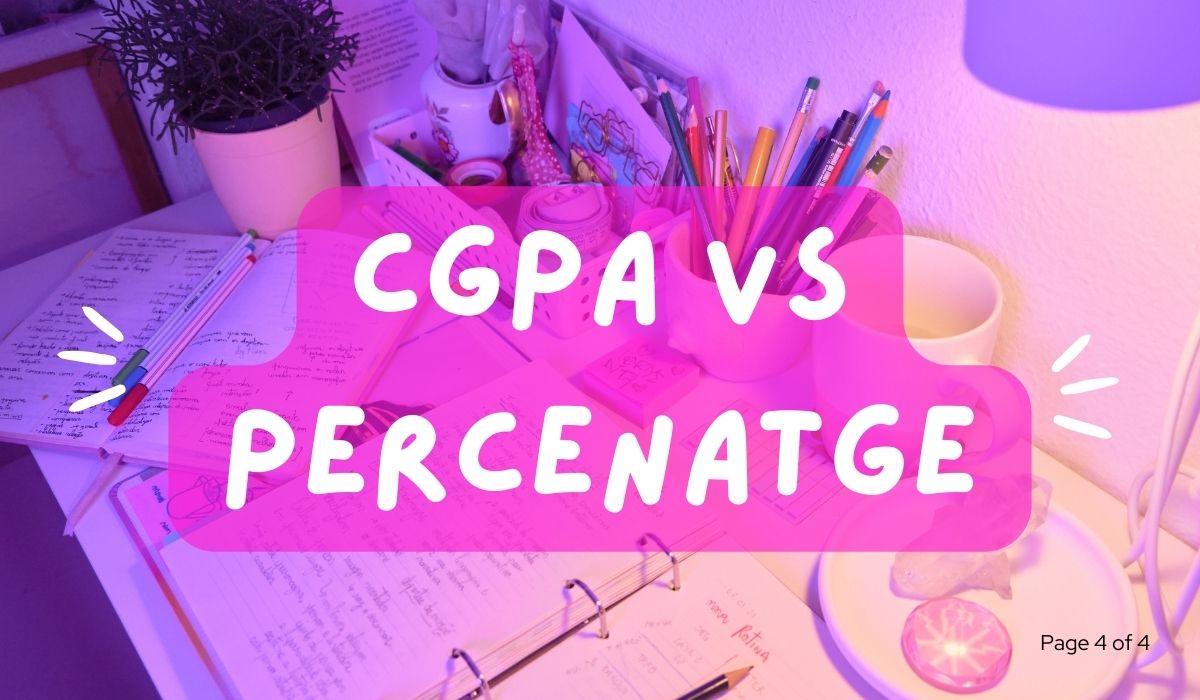When you think about exams and results, the terms CGPA and percentage come up often. These are very important in your studies. Schools and colleges in India use them to see how well you do. I myself have given 10th boards with percentage system while my elder brother has given exams in CGPA system.
But what makes CGPA and percentage different? And which one suits students more? It is a general question that many people ask. Here, you will learn about both. This will help you understand which one is better for you.
[wpcode id=”725″]
What Are CGPA and Percentage?
CGPA means Cumulative Grade Point Average. It shows your total performance in studies. In CGPA, your grades in each subject change into points. The points go from 1 to 10 or 1 to 4. Your grades in all subjects are averaged to get your CGPA. This looks at your learning in all areas. It does not only see one exam or subject. CGPA helps you see how you do overall.

The percentage is simpler than the CGPA. Here, you get marks out of a total. For example, if you score 75 out of 100 in a subject, your percentage is 75%. This directly shows your marks in each exam. It is easy to understand your score in every subject.
You can easily convert CGPA to Percentage or Percentage to CGPA as both can determine your academic performance
How Do They Differ?
- CGPA looks at how you do overall in all subjects. Percentage shows your score in each exam separately.
- CGPA uses points from 1 to 10. Percentage uses your marks compared to total marks.
- CGPA is better to show your learning and progress over time. Percentage directly reflects exam performance.
Which One Suits You Better?
If you want to see your growth in studies overall, CGPA is good. It shows how you improve in all subjects. If you want to know your score in each exam easily, the percentage is helpful.
So choose as per your needs. You should know both systems because both schools and colleges use them.
[wpcode id=”741″]
Pros and Cons
CGPA and percentage have their own pros and cons. Knowing these can help you determine which system works best for you.
Pros of CGPA
- Shows Overall Performance: CGPA gives an idea of your consistent performance over time. It looks at multiple exams and subjects.
- Less Exam Pressure: With a CGPA, one exam does not impact you too much. You can improve equally in all subjects. This reduces stress to a greater extent.
Cons of CGPA
- Can Be Confusing: CGPA averages your grades, so your exact marks in each subject may not be clear.
- Hides Actual Marks: A high CGPA doesn’t always mean you score very high marks in every exam.
Pros of Percentage:
- Easy to Understand: Percentage directly shows your marks out of the total.
- Shows Subject-wise Performance: Percentage reflects exactly how you performed in each exam.
Cons of Percentage:
- Exam Pressure: Every exam matters a lot for your percentage. This can build stress to do well in each one.
- No Consistency: Percentage does not show your improvement over time.
Comparing CGPA and Percentage in Various Scenarios
In Schools: You often see your teachers use CGPA and percentage. CGPA shows how well you do in all subjects over time. This can help you if you don’t do well in one exam. The percentage tells you your marks on each test. You can know where you stand in each subject with this.
In Colleges and Universities: You will see CGPA more in colleges. It shows how you do in the whole course. This works well for courses that have projects, exams, and classwork. You can also see some colleges use percentages. They do this for courses with big final exams. You can see how you do in these main papers.
In Job Applications: Some companies look at your CGPA. They think it shows you have good skills and can learn well. Other companies like percentages more. They want to see how much you know about subjects. This is true for jobs that need special skills.
For Further Studies: When you apply for master’s programs, universities look at both. Some like CGPA to see if you can learn well overall. Others want percentages to check how you did in important subjects in your first degree. You need to keep a good CGPA and stay healthy for more studies. That’s why it’s important.
Student Perspectives
Some students prefer CGPA as they feel it is more fair. It shows overall performance across subjects and time. This reduces stress about individual exams.
Other students like percentages more. They find it simple to understand their exact scores. This helps them know which areas need improvement.
Many students have mixed views. They see advantages in both systems. Some feel a combination could be best to reflect performance fully.
Conclusion
So, which is better? CGPA or percentage? The answer depends on what you need. CGPA shows your overall learning. It helps if you want to focus on all subjects. Percentage gives a clear picture of your marks in each exam. It’s good if you want to know your exact scores. Both have their uses. The best choice depends on your situation and what you find important. Remember, both are just ways to measure your learning. Your hard work and understanding are what truly matter.
